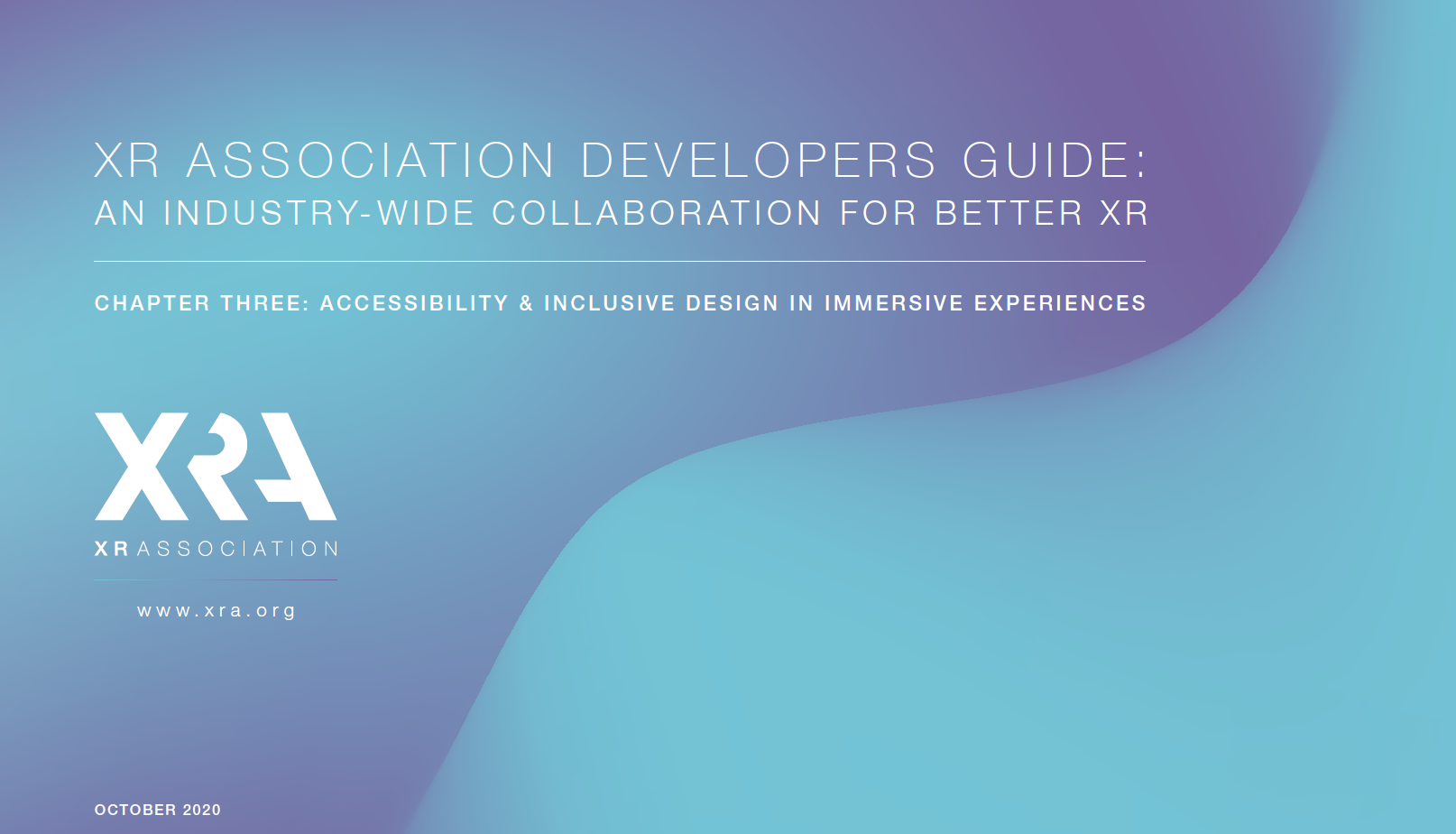
In Augmented Reality, Virtual Reality and Mixed Reality News
October 28, 2020 – The XR Association (XRA), the trade association representing technology manufacturers that power the augmented, virtual and mixed reality (AR/VR/MR – collectively XR) industries, has released an update to its Developers Guide, a starter guide for developers designing reality-expanding experiences. This standalone update, ‘Accessibility & Inclusive Design in Immersive Experiences,’ offers a set of industry-backed best practices for developing accessible platforms that enhance experiences for all users, not just those with disabilities.
“The release of this important chapter on accessibility demonstrates the XR industry’s commitment to accessibility as a foundational consideration of virtual, augmented and mixed reality technologies, not as an afterthought,” said XRA CEO, Liz Hyman. “As we mark the 75th National Disability Employment Awareness Month, it is vital to ensure that accessibility is a feature not only of consumer uses but also important enterprise applications which foster immersive workplaces open to people of all abilities.”
First published in 2018, the XRA Developers Guide outlines design principles meant to guide the responsible development of immersive experiences. The XRA stated that this third chapter builds on prior guidance focused on physical and psychological user comfort and safety in XR to help ensure users of all abilities can take advantage of the many benefits and opportunities the technology offers. The XRA’s member companies and a coalition of accessibility advocates, including the XR Access Initiative, came together to share feedback that assisted in the creation of the new chapter.
“The XR Access Initiative was formed to help ensure all voices were heard – across multiple stakeholder groups – in order to develop and advance a shared vision for the inclusive design and accessibility in XR technologies,” said Larry Goldberg, Head of Accessibility at Verizon Media and one of the leaders of the XR Access Initiative. “We are excited to support and collaborate with the XR Association as they integrate accessibility into their work of promoting responsible development and thoughtful advancement of XR that foster positive societal outcomes.”
The XRA added that this updated release represents further progress towards its mission of promoting the responsible development and thoughtful advancement of XR technology globally. The new chapter outlines best practices for implementing features and applications that are inclusive, give users control over their experiences, and reflect input from people with disabilities at all stages of development.
“This effort by the leading XR manufacturers and accessibility advocates to align on inclusive design principles is an important step towards ensuring accessibility is front of mind in the continued development of this emerging technology,” said Christopher Patnoe, Head of Accessibility Programs at Google.
To read the full ‘Accessibility & Inclusive Design in Immersive Experiences’ chapter, click here.
Image credit: The XR Association
About the author
Sam is the Founder and Managing Editor of Auganix. With a background in research and report writing, he has been covering XR industry news for the past seven years.
